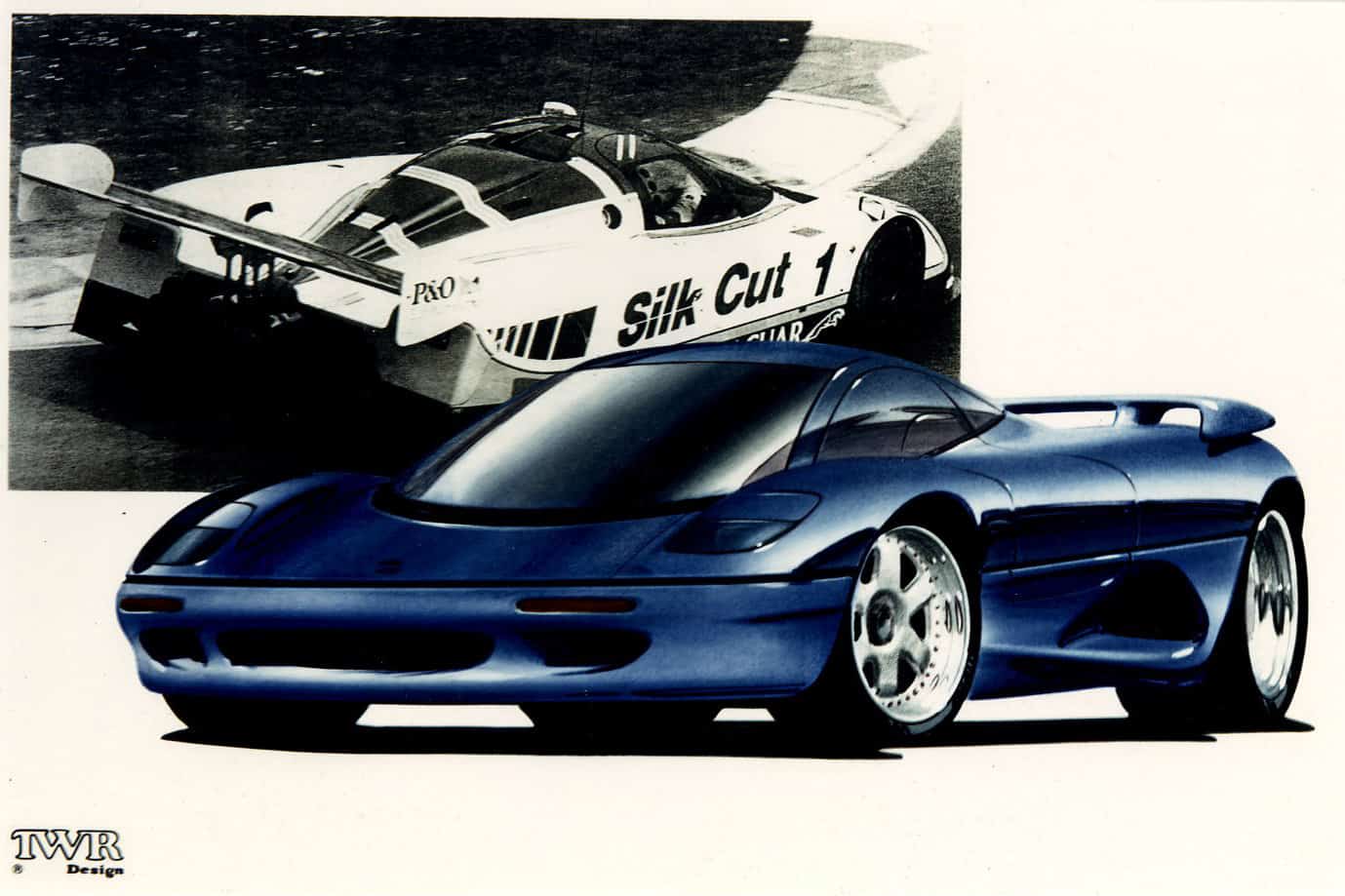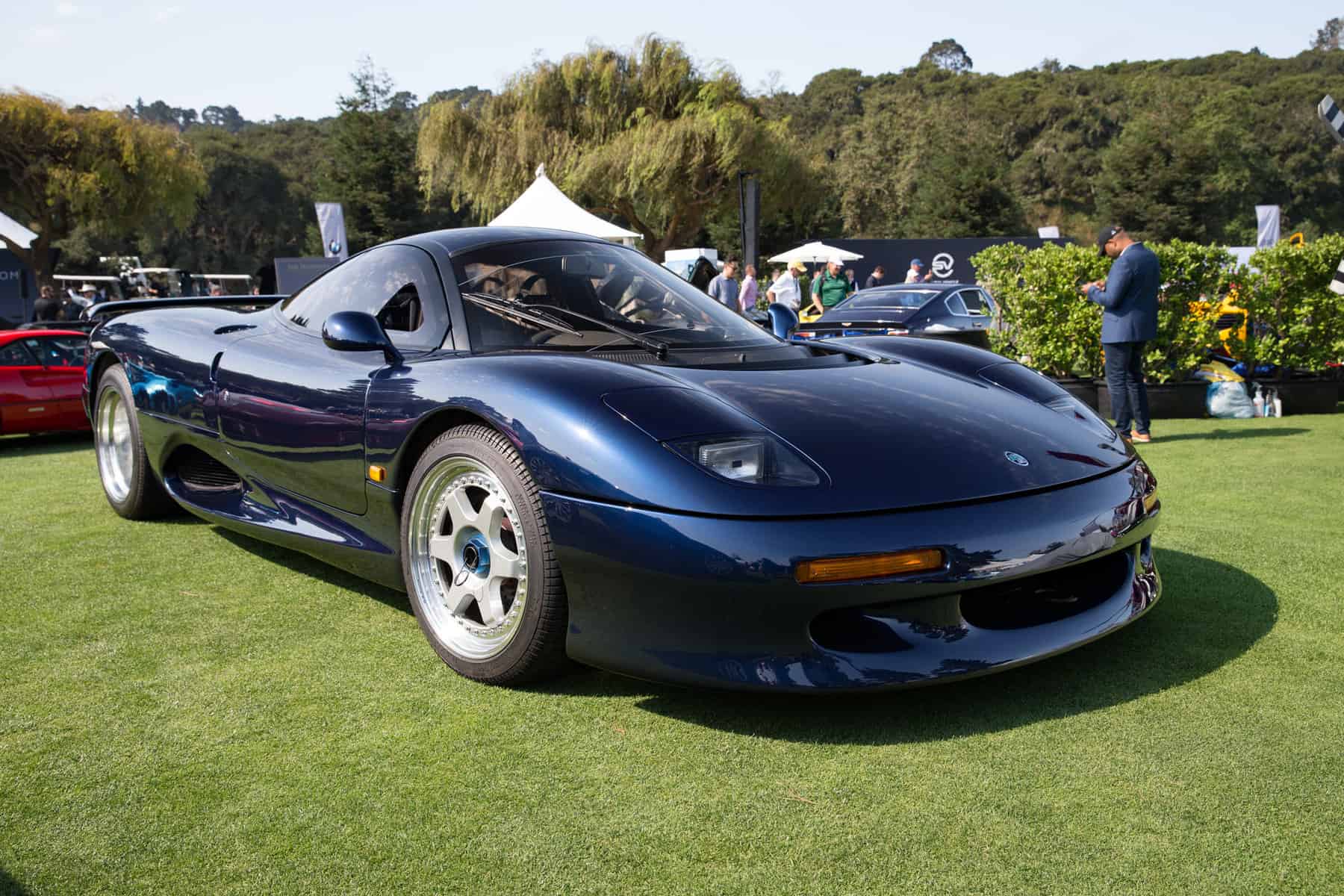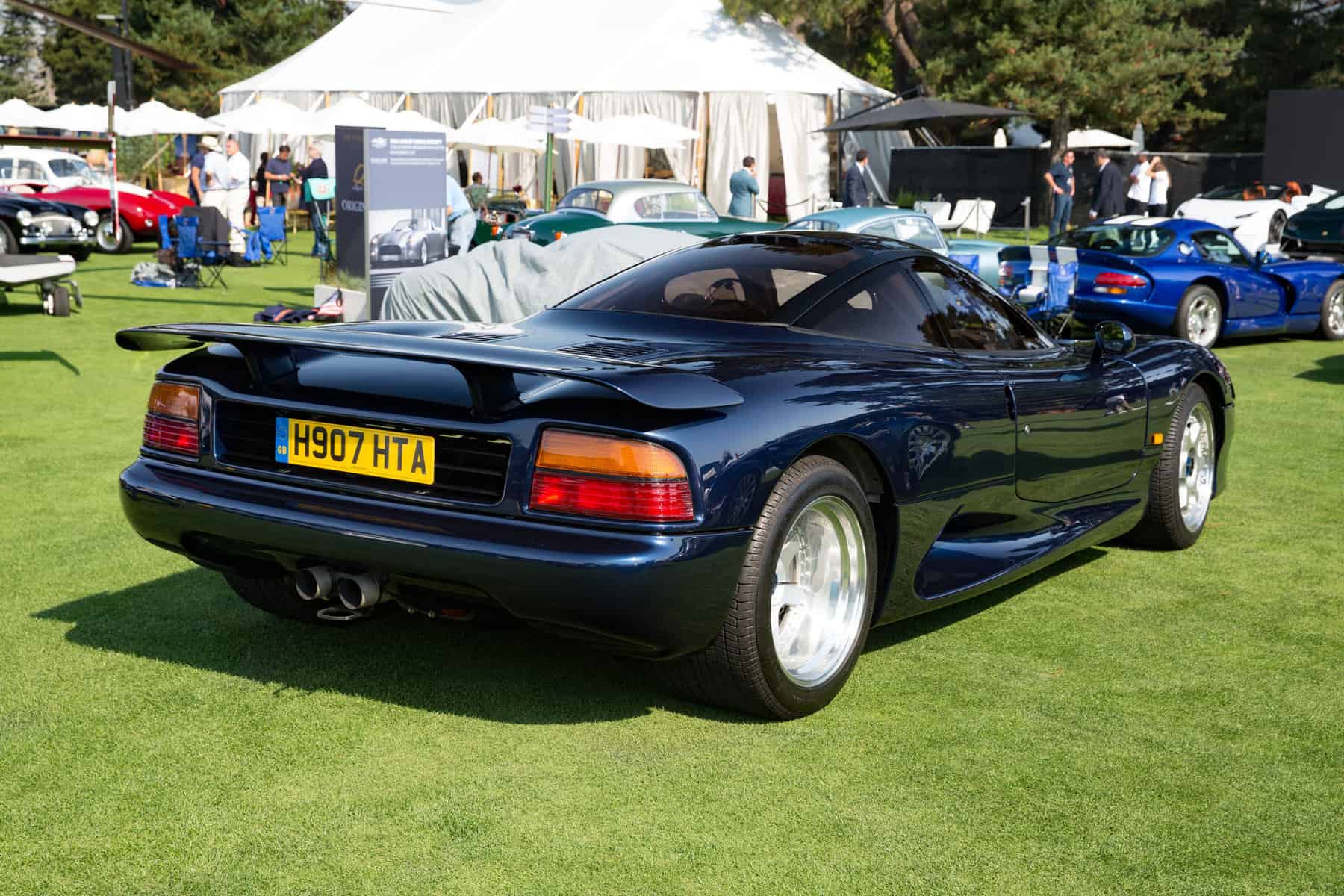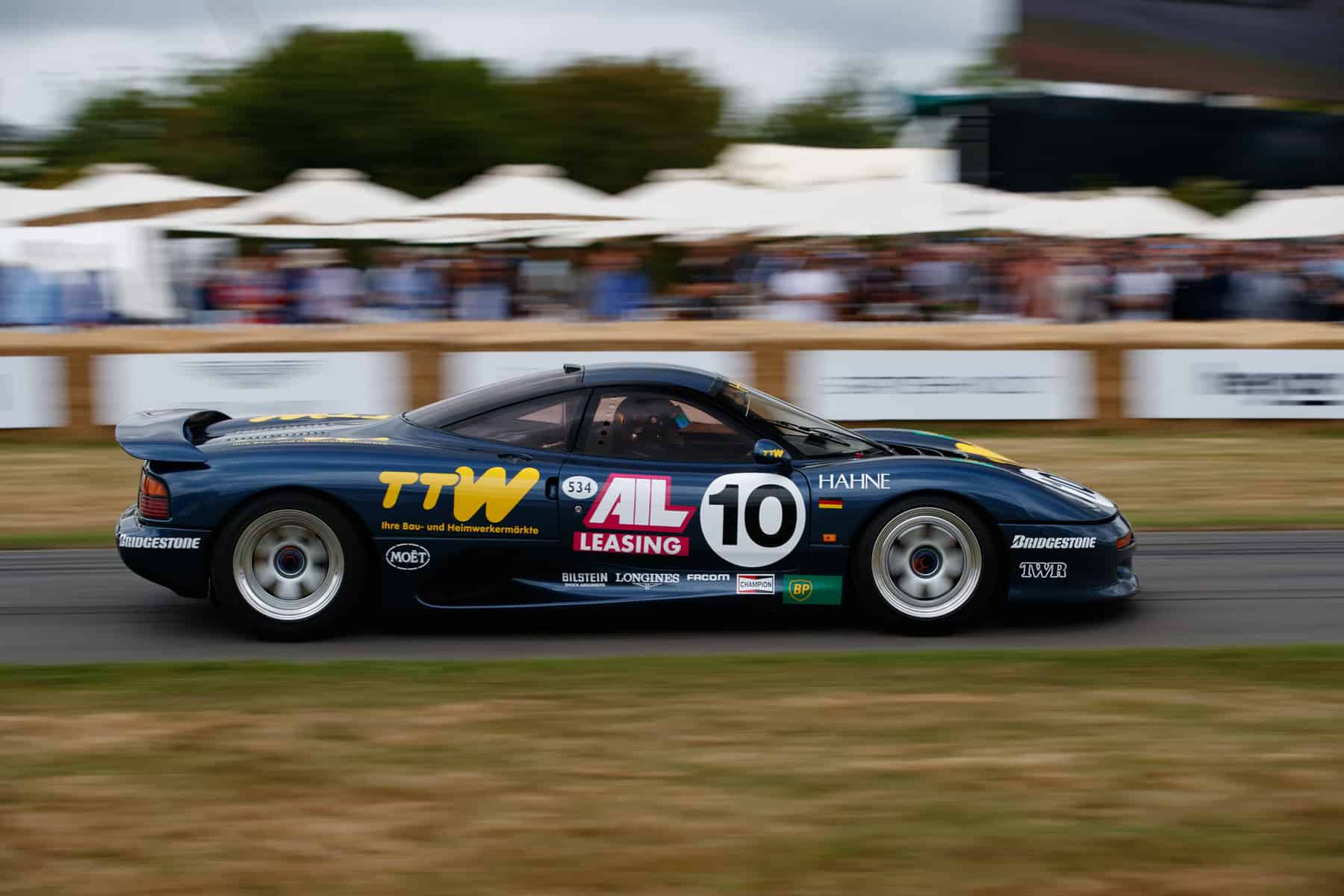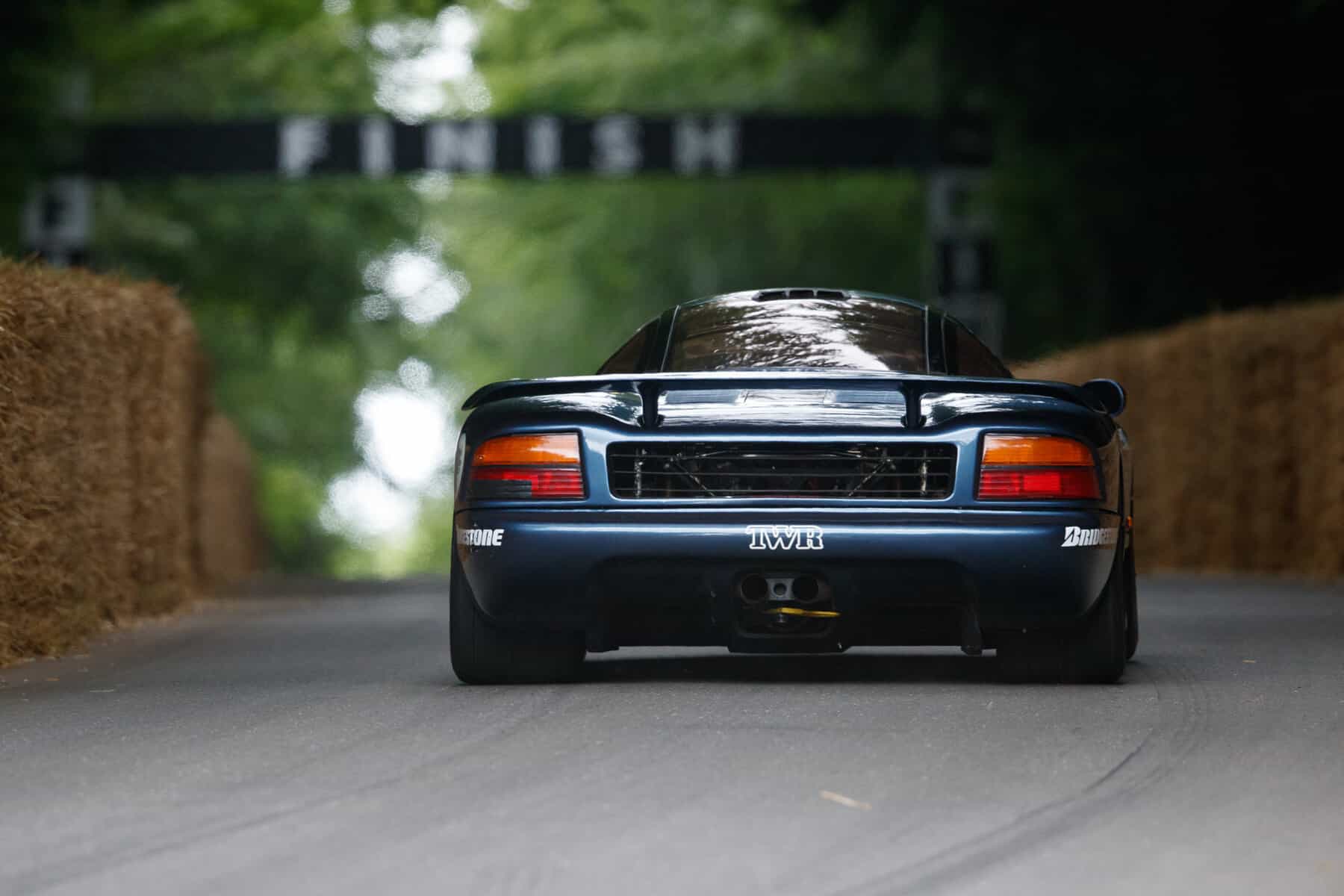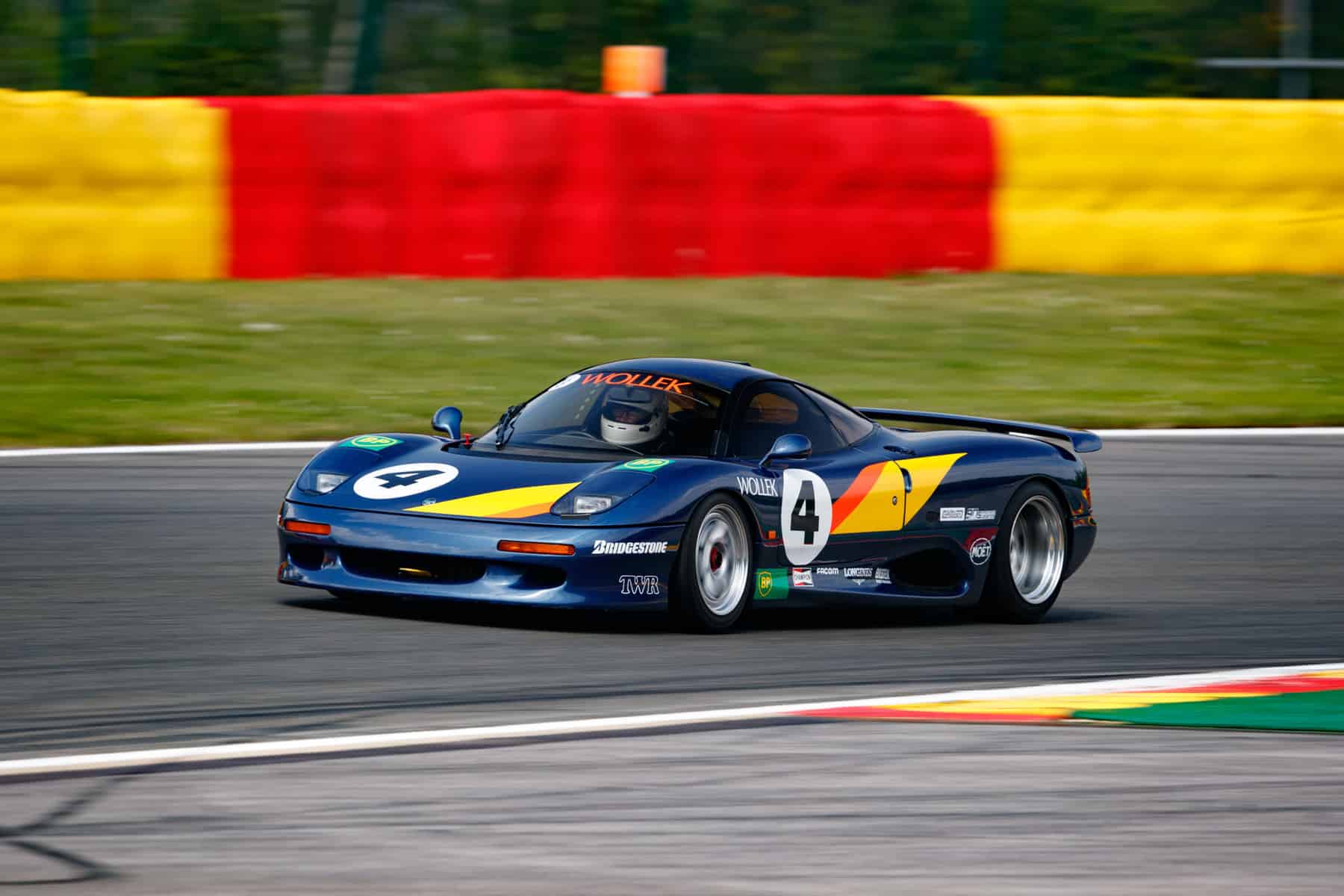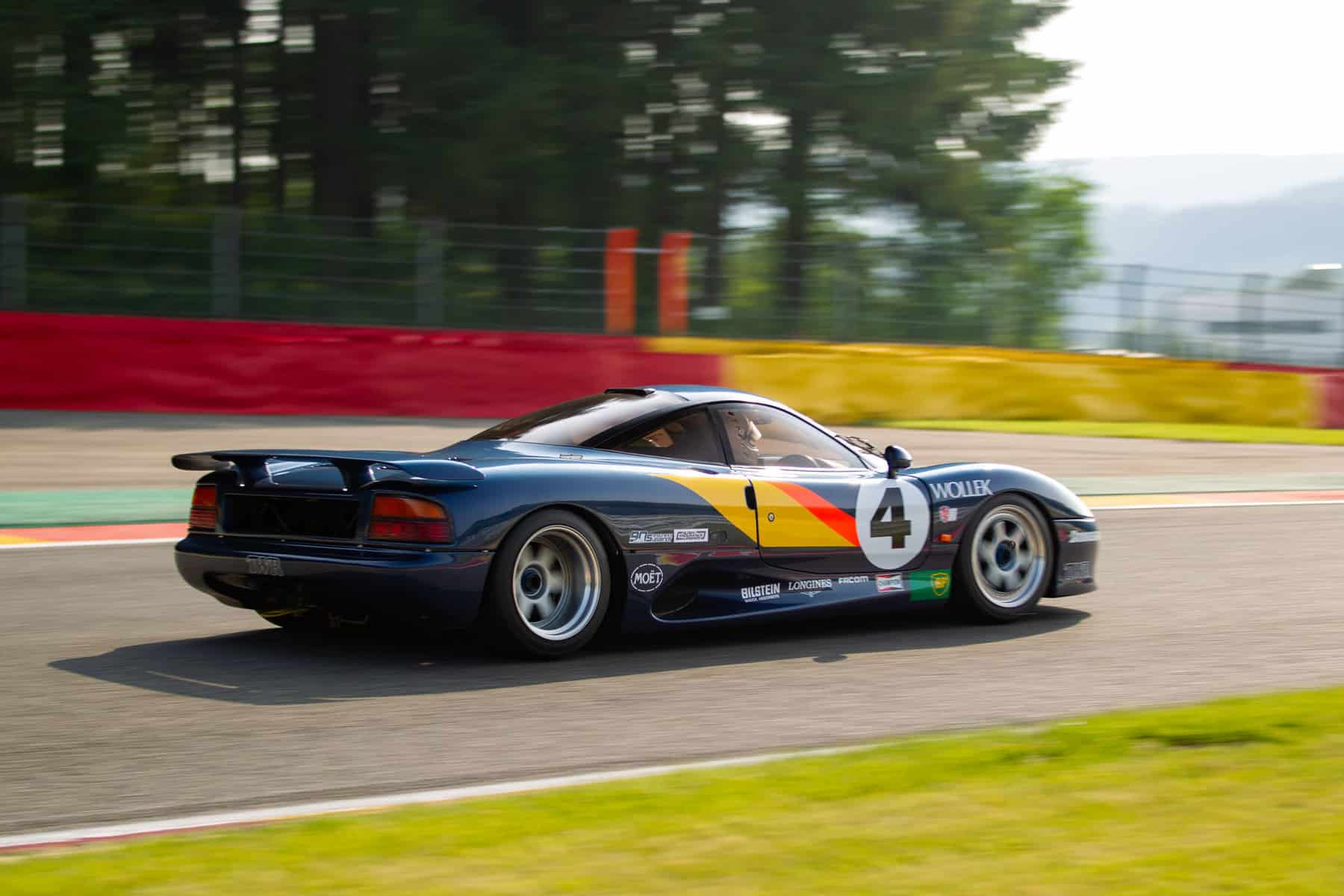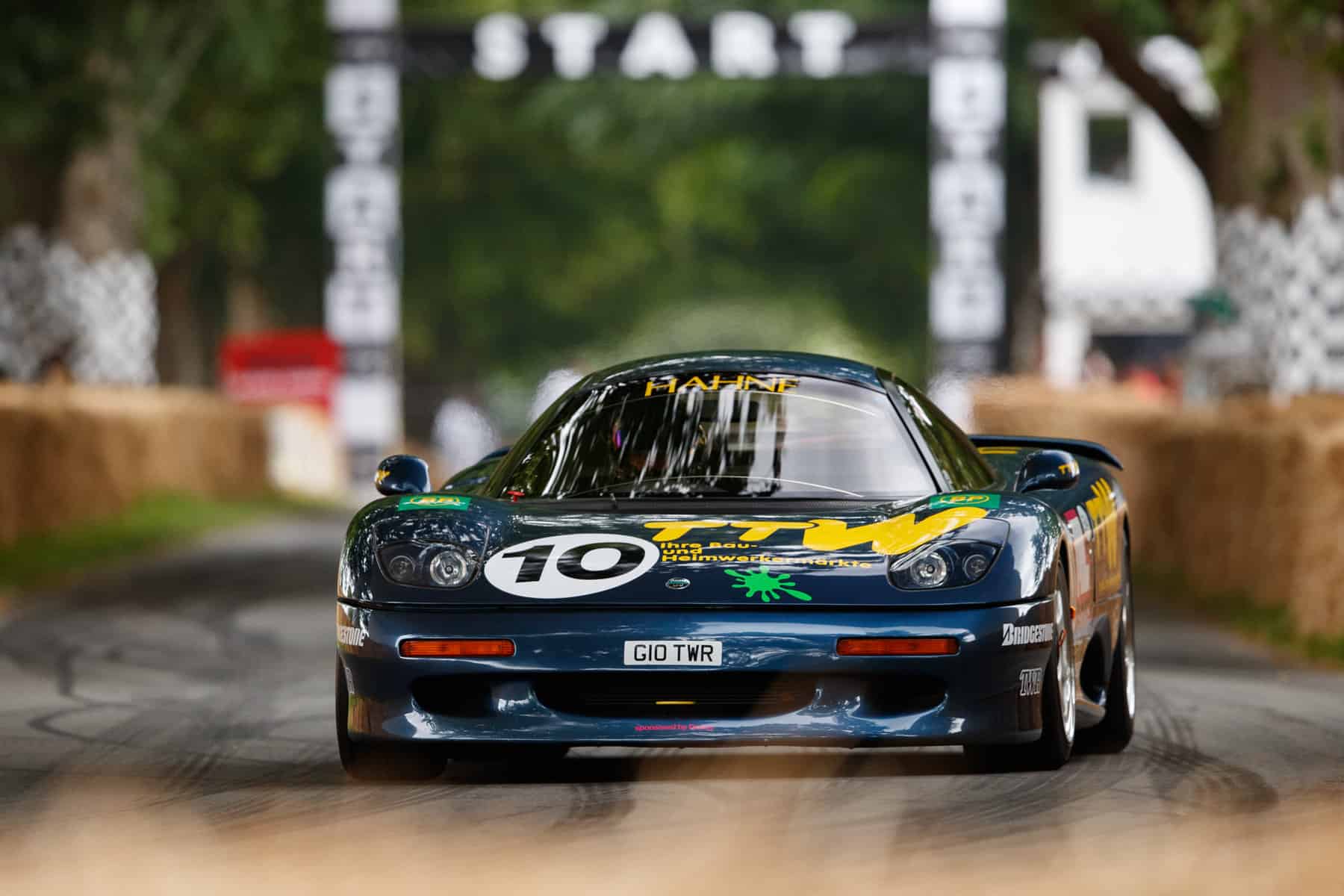
Jaguar XJR-15
The first carbon-fiber production road car – a true collectible
WORDS & IMAGES BY: WOUTER MELISSEN
In 1987, Jaguar was crowned World Sports Car Champion. It was the first major international success for the British marque since 1957 when a D-Type was driven to an outright win at the 24 Hours of Le Mans. As the icing on the cake, Jaguar also won Le Mans in 1988. The on-track success spawned not one but two road-going supercars – the XJ220 and the XJR-15.
While the former is better known, the XJR-15 is the most interesting of the two, as it is much more closely related to the Group C racing cars and has also gone into history as the first production road car with a carbon-fiber composite chassis.
The XJR-8s and XJR-9s raced during the 1987 and 1988 seasons respectively were developed, built, and raced for Jaguar by specialists Tom Walkinshaw Racing (TWR). Designed by Tony Southgate, these were spectacular machines powered by Jaguar-sourced V-12 engines. Built to the popular Group C regulations, these Silk Cut–liveried racers were immediate fan favorites. Not only did they look striking, but they were also immensely fast, and the 7.0-liter V-12 engine produced a glorious howl. In the capable hands of TWR, Jaguars would also go on to win Le Mans in 1990 and the World Championship for teams again in 1991.
Buoyed by the success on the track, several Jaguar engineers set about creating a road-going supercar, mostly in their spare time. Launched at the 1988 Birmingham Motor Show in concept form, it was known as the XJ220. Reviving another 1950s Jaguar tradition, the 220 referred to the top speed in miles per hour. Built around a bonded aluminum chassis, the XJ220 was a technological tour de force, as it combined a mid-mounted V-12 engine with four-wheel drive. One of the reasons for this was that it was also created with Group B regulations in mind where it was a potential rival for the Porsche 961 and Ferrari 288 GTO.
Among the visitors to the Birmingham show were Tom Walkinshaw and designer Peter Stevens: “Tom had invited me there to look at the 220 because he had it in mind to produce a high-performance road car for a year or two.” Stevens recalls: “He considered the 220 to be a rather oversized grand touring car while what he had in mind was to offer owners the chance to drive a ‘Le Mans’ car on the public road.” Stevens was subsequently tasked with creating a car that was much more closely related to the Group C racers. “My brief was therefore that simple. ‘Oh yes, and it has to look great,’ he then said.”
Although the XJ220 may not have been what Walkinshaw had in mind, it resonated with the public and Jaguar took close to 1,500 deposits for the upcoming production version announced after the Birmingham debut. Not just a great racing car driver and team manager, Walkinshaw was also shrewd businessman. He recognized that this was a great opportunity and agreed with Jaguar that the XJ220 would eventually be built by JaguarSport, a joint venture between TWR and Jaguar created in May 1988 with Walkinshaw as managing director. By the time the production-ready XJ220 was launched, it looked the same but had some profound changes: the four-wheel-drive system was scratched and the V-12 replaced by a twin-turbo V-6.
During that same period, JaguarSport also produced what was initially known as the TWR R9R but eventually sold as the Jaguar XJR-15. Despite Walkinshaw’s clear brief, Stevens did have to compromise: “Tom had played around with a Jaguar XJR-8 to see how it might look if adapted to be a road car. Raised suspension, modified lights, and two very cramped seats – it looked awful. Tom gave me the ex-Wynn Percy Le Mans XJR-8 that had taken off and slid along on its roof after a tire exploded on the Mulsanne straight. I quickly pointed out to Tom that he would not be able to get into it and more likely nor would the prospective customers, they wouldn’t be race-jockeys.
“Therefore we did not use anything of the monocoque tub or bodywork.” While the actual chassis of the Le Mans–winning XJR-9 was not carried over, its successful principles were: “Jim Router who designed the tub did use Tony Southgate’s engineering philosophy when doing the design work. Eddie Hinkley and Dave Fullerton used some but not all of the suspension components during their engineering development work. The windscreen and all the other glazing (actually perspex) was also new.” As on the Group C cars, the carbon-fiber composite monocoque formed only two-thirds of the chassis, with the rear suspension bolted directly to the semi-stressed engine and gearbox.
The engine used was a 6.0-liter version of the successful Jaguar V-12. The all-aluminum unit had single overhead camshafts and featured a sophisticated digital electronic fuel-injection system produced by Zytec. Despite the sheer size of the engine, the V-12 weighed just 240 kg including accessories. According to JaguarSport, it produced at least 450 hp. It was mated to a six-speed gearbox with straight-cut gears. A five-speed, all-synchromesh gearbox was also available as an option. Double-wishbone suspension was fitted on all four corners with push-rod actuated springs and dampers at the rear. Stopping power was provided by ventilated disc brakes.
To ensure the R9R looked great, Stevens started with a clean sheet: “I saw the car as a way for personal design language to develop in a different direction from the Italian ‘folded cardboard’ style.” He continues: “It was never the objective to give the road cars massive aero downforce; the aim was to have a balanced car with around 100 kg of downforce at 160 mph (250 Kmh). I did the aero development in the Campbell moving floor wind tunnel at London’s Imperial College.” The result was an elegant and clean design, interrupted only by a small wing mounted on the trailing edge of the rear end. The canopy-style cockpit provided the driver with exceptional visibility.
“The first that I remain very proud of is that our little team of just six good mates produced the very first all carbon composite road car, if you are first then you are always first!” Stevens explains: “I also think that it was quite an achievement to go from the first design sketch to having a car for Tom to drive on his return from the 1990 Le Mans win for Jaguar in just fourteen months. He immediately took the license plates off his Range Rover and had fixed them to the XJR-15 so he could drive it for a week. At that time the car was called a TWR R9R.” Jaguar also liked the idea of the road-going Le Mans car and it was officially dubbed the Jaguar XJR-15 when it was formally announced in a JaguarSport press release on November 15, 1990.
The press release explained that the XJR-15 was priced at £500,000, or about $1,000,000, and that production was strictly limited to fifty examples. This allowed the XJR-15 run to be completed by JaguarSport by the time the XJ220 was ready to enter production. To underline the racing pedigree, the one-make Intercontinental Challenge was also announced. This allowed XJR-15 owners to have their cars prepared by TWR and raced by professional drivers during the 1991 Monaco, British, and Belgian Grands Prix. Up to thirty XJR-15s could compete and the race winners would be awarded a Jaguar XJR-S road car as first prize. The owner of the championship-winning car could get his money back, as a $1,000,000 check awaited at the end of the season.
Among the drivers entrusted with an XJR-15 was German touring car ace Armin Hahne: “It was a nice car to drive because it had quite a lot of horsepower and a lot of torque thanks to the 6.0-liter V-12. There were nearly no aerodynamic aids, just a small rear wing. As a touring car driver I was used to this, so I adopted quite quickly to the car.” Hahne duly qualified “his” XJR-15 on the front row for the season opening Monaco round. During the race, he lost a few positions due a half spin on oil and eventually finished fifth. At Silverstone, luck was again not on his side, as a misfiring engine dropped him down to order to finish fifth again.
All was still to play for during the final round of the Intercontinental Challenge at Spa Francorchamps. “Spa is one of my favorite circuits and I won the Spa 24 Hours twice.” Hahne explains: “I was fastest in first practice and decided to save the second of two sets of fresh tires allocated for the race. Of course I was not on pole position as a new set of tires was good for at least a second per lap.” Hahne nevertheless managed to qualify second. “I think I was the only one to have a new set for the race, so I knew I had an advantage.” Hahne continues: “I overtook Dutch driver Cor Euser in the second or third lap and then there really was no big pressure from behind. So for me it was one of the easiest races, although I did win one million dollars.”
In 2021 and again in 2022, the Intercontinental Challenge champion was invited to Goodwood to drive the winning XJR-15 during the Members’ Meeting and Festival of Speed. “When I got into the car, the smell of the honeycomb, Kevlar, and brakes was quite familiar. It made me remember driving the car last, which was at the Spa race in 1991. Driving the car again was very nice; I could really remember how I felt when I raced the car over thirty years ago.”
Of the fifty proposed customer cars, sixteen were built to racing specifications for the Intercontinental Challenge and the final five road cars were fitted with larger engines, a roof-mounted engine air-intake, and a more aggressive aerodynamics package. These five cars were all sold to the far east, and little has been heard of them since, making them very elusive. It is often reported that fifty-three XJR-15s were built, but Stevens does not quite understand why: “The prototype car remains as TWR R9R 01 and the last, or fifty-second car, is also a TWR R9R because Tom Walkinshaw owned the IP for the R9R. Where ‘fifty-three cars’ came from I do not know.”
By the time the XJ220 entered production, many of the prospected customers were left disappointed. Particularly the lack of a V-12 engine was a deal-breaker, even though the twin-turbo, 542 hp V-6 had also been derived from the TWR/Jaguar Group C program. There were many cancelled orders and Jaguar did not even succeed to sell the proposed 350 examples. Eventually fewer than three hundred were built, some of which were left unsold long after production had ceased in 1994. This did no justice to the intrinsic qualities of the XJ220 and also reflected poorly on the XJR-15 even though JaguarSport had had no problem finding owners for the fifty cars it had been commissioned to build.
After Jaguar retired from sports car racing, TWR was commissioned by Nissan to develop a new GT1 racer to take on the likes of Porsche and Mercedes-Benz. The XJR-15 chassis design was repurposed and formed the basis for what would become the Nissan R390. For Stevens, his next job was to design the body and interior and develop the aerodynamics for one of the great road-going supercars: the McLaren F1.
For many years, the XJR-15 and even more so the XJ220 were shunned by collectors. In the early 2000s an XJR-15 was worth less than one hundred thousand dollars. Fortunately, the misconceptions have been taken away, and in 2021 a XJR-15 road car sold for close to two million dollars at auction. It is only fitting that the very first carbon-fiber production road car has now become a true collectible.
